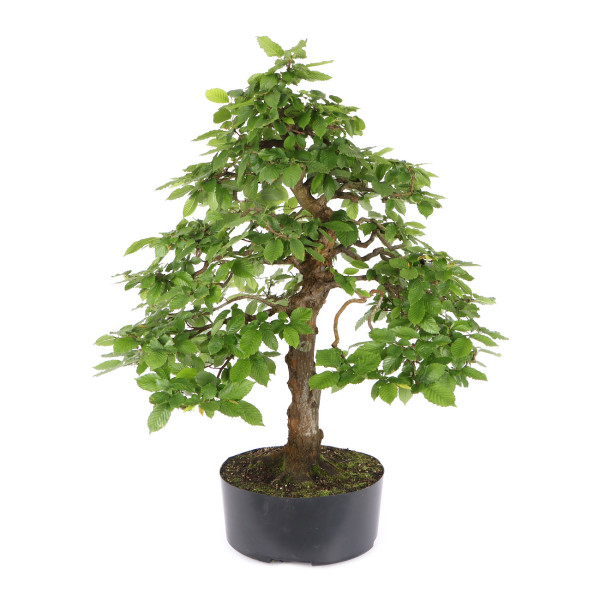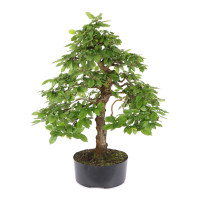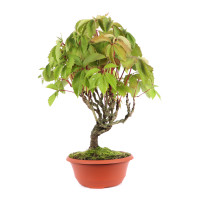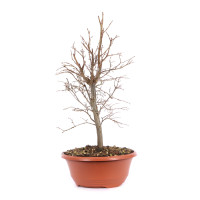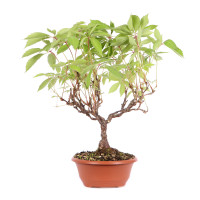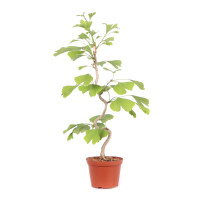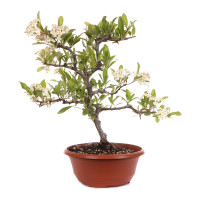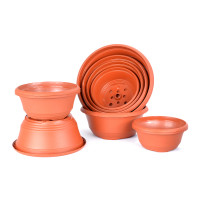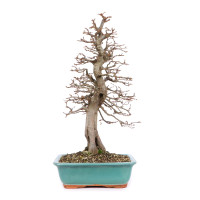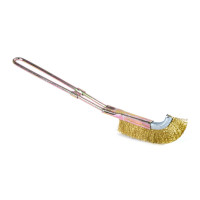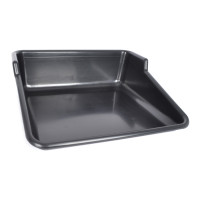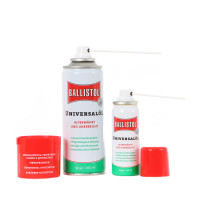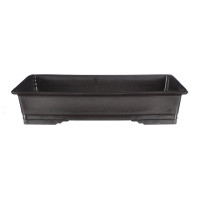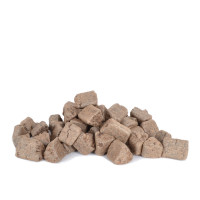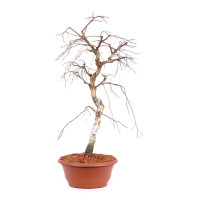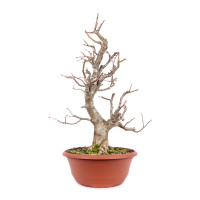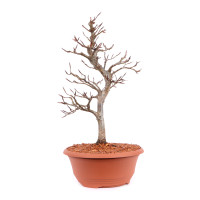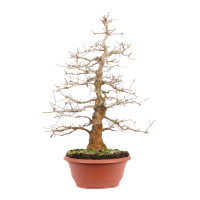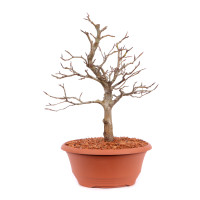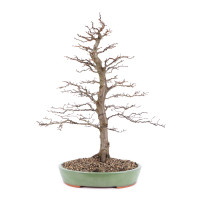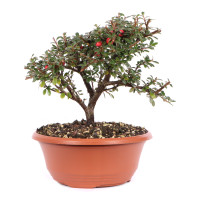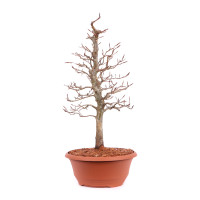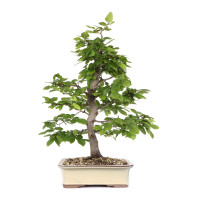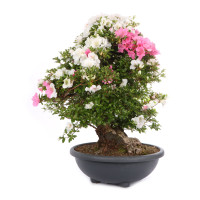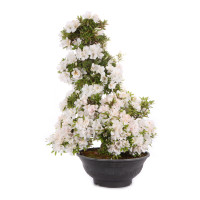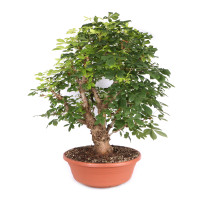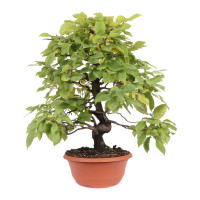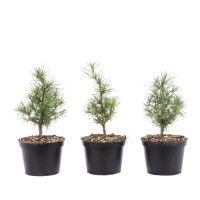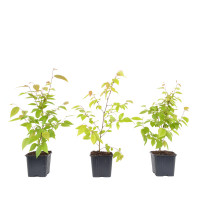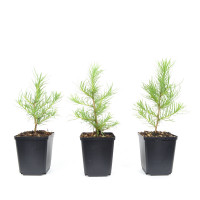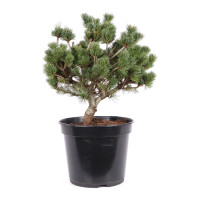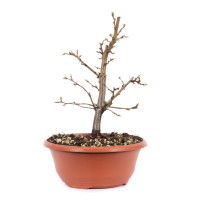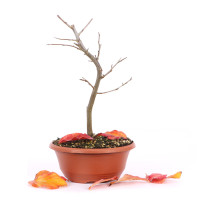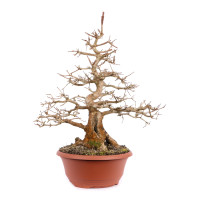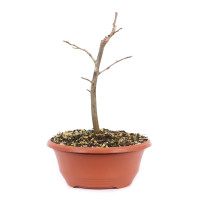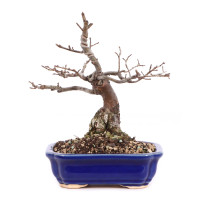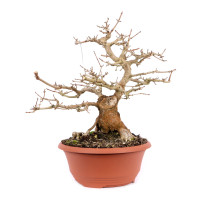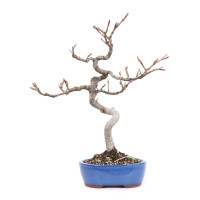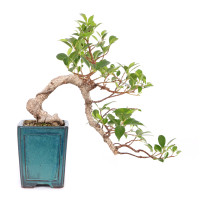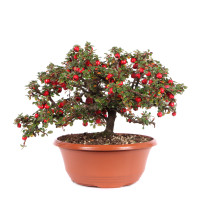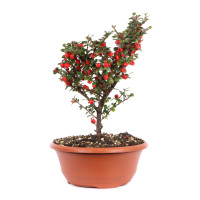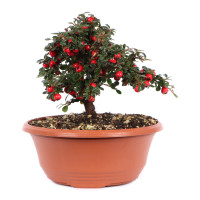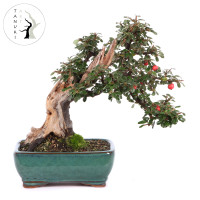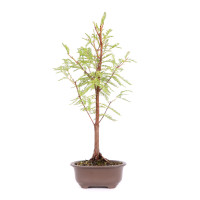- Order number: 1045-P-24-1995
- Height: 115 cm (incl. pot)
- Foliage: deciduous
- Bonsai Pot: plastic pot
- Age: ca. 25 years
- Origin: Germany
Carpinus betulus - Hornbeam
General:
The hornbeam is widespread in Europe and as far as northern Persia. Together with the oak it forms typical oak-hornbeam mixed forests. The hornbeam can reach heights of 25 meters and often has a twisted but smooth trunk. The egg-shaped leaves are fresh green in summer and turn bright yellow in autumn. The hornbeam is very tolerant of soil and site conditions. It also has a very high rash, can withstand heat and drought and is very frost hardy.
Care as a bonsai:
Of the native trees, the hornbeam (also known as the hornbeam) is certainly the easiest to shape. Due to their good cut tolerance and their willingness to grow, you have handsome small trees in a very short time. Their smooth bark and the irregular bulges that appear on the trunk look most interesting in freely upright forms. The hornbeam grows vigorously all summer, so that constant pruning is necessary. In extreme heat, it is advisable to place the plant a little more shady to avoid leaf burns. If you want to promote rapid growth in the thickness of the branches and trunk, plant the hornbeam outdoors or in an oversized pot and do not cut during the entire summer. The hornbeam is only taken back sharply in spring. It is even possible to cut all branches back to the trunk. In the following summer, the fresh shoots are again not cut. The tree is only rebuilt in winter or spring and potted in a bowl. The time for repotting should not be set too late, as, according to our experience, hornbeams that were repotted while sprouting had serious problems growing. During the following growth period, the fresh shoots are shortened in time to achieve fine branching. The hornbeam does not make any great demands on the location; shading during lunchtime only makes sense in extremely warm summer months. The plant should not dry out in winter. A sheltered overwintering in a non-heated glass or foil house is ideal. The plant must also be protected during late frosts.

